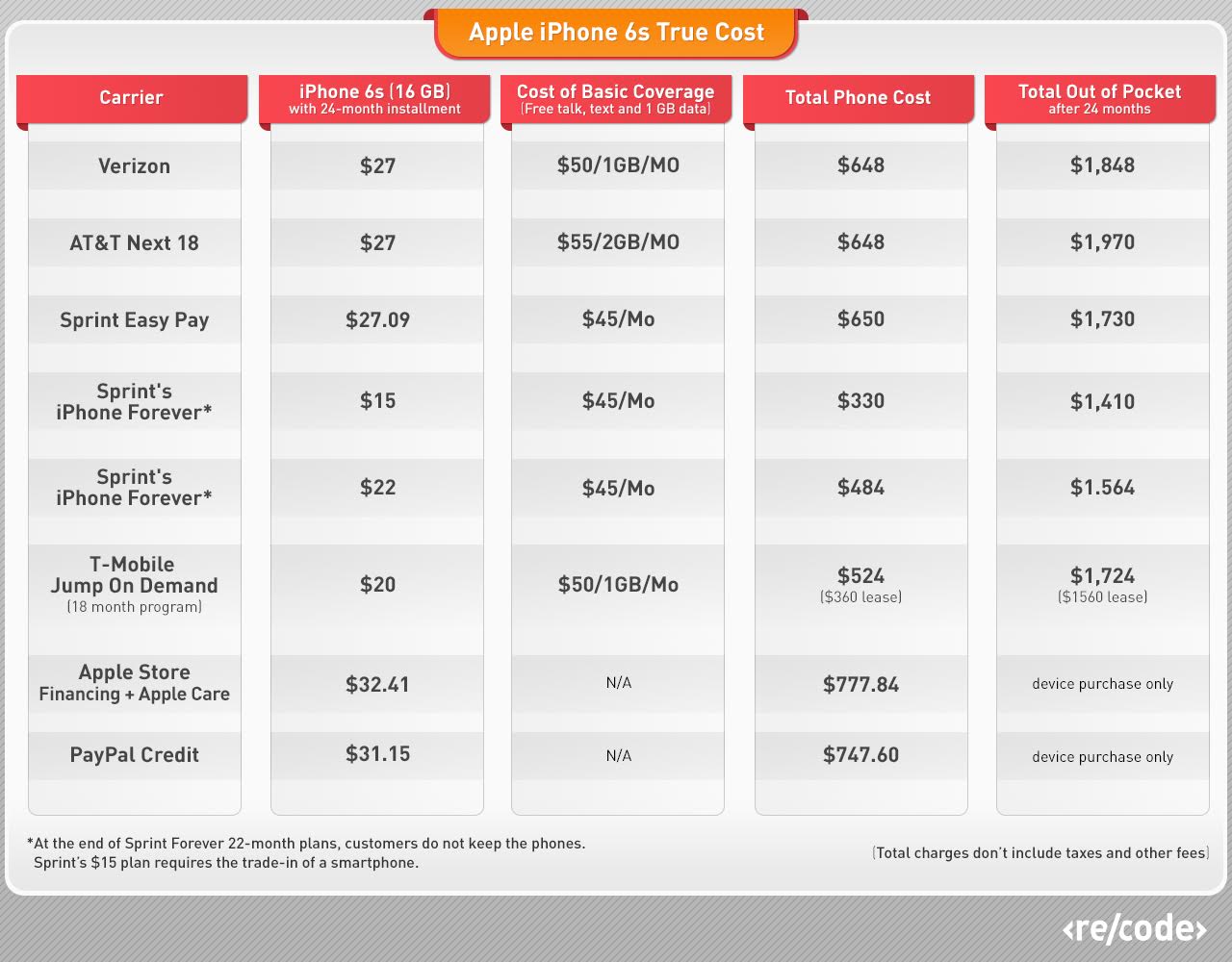Ina Fried reports in re/code:
With multi-year contracts and the subsidies that accompanied them being phased out, Apple faces a new dilemma on how to hide the basic fact that behind that shiny new iPhone is a device that costs upward of $650 — and in some cases close to $1,000.That has been true all along, but the carrier subsidies have hidden the cost to consumers.
Since the debut of the Apple iPhone in 2007, the slide that typically followed the end of the onstage introduction was a simple chart advertising its delightfully low cost — starting at just $199 with a two-year contract, $99 for the outgoing model and even free for older versions.
But with multi-year contracts and the subsidies that accompanied them being phased out, Apple faces a new dilemma on how to hide the basic fact that behind that shiny new iPhone is a device that costs upward of $650 — and in some cases close to $1,000.
That has been true all along, but the carrier subsidies have hidden the cost to consumers. Instead, carriers recouped the difference between the upfront cost and manufacturer’s retail price by building it into their customers’ monthly bill.
When Apple introduces the new iPhone 6s and 6s Plus, expect them to steal a page from the infomercial playbook. Apple will likely focus attention on how, with virtually no money down and low monthly installments, consumers can walk out of the store with the latest greatest device. It is a strategy the U.S. carriers have also borrowed to sell consumers on such phone financing plans. The iPhone 6, for instance, cost just a little over $21 per month over a 30 month period for a total of $650, which is the equivalent of the full retail price of the phone.
It’s worth noting, however, that carriers aren’t actually charging you more or less for the phone and service. In the past, when carriers offered to sell phones at lower prices of $199, it factored the cost of a discounted phone into what it charged per month. Consumers who pick up new phones using the new financing plans get a roughly $25-per-month discount, essentially making things a wash.
For those who really, really want to buy their phone on a two-year contract, there are a few options. AT&T still offers contract pricing, but only through its own stores and websites. Sprint has said it plans to phase out such pricing and has been focused on plans that lease iPhones to customers. Verizon has stopped offering contract pricing to new customers, but will offer existing contract customers an option to continue getting their phones in that manner. T-Mobile is the only carrier that offers no subsidized phone options whatsoever, having dropped such pricing more than two years ago.
The question is why bother, now that you know that it was little more than marketing jujitsu meant to make parting with your cash easier. Apple declined to comment.




















0 comments:
Post a Comment